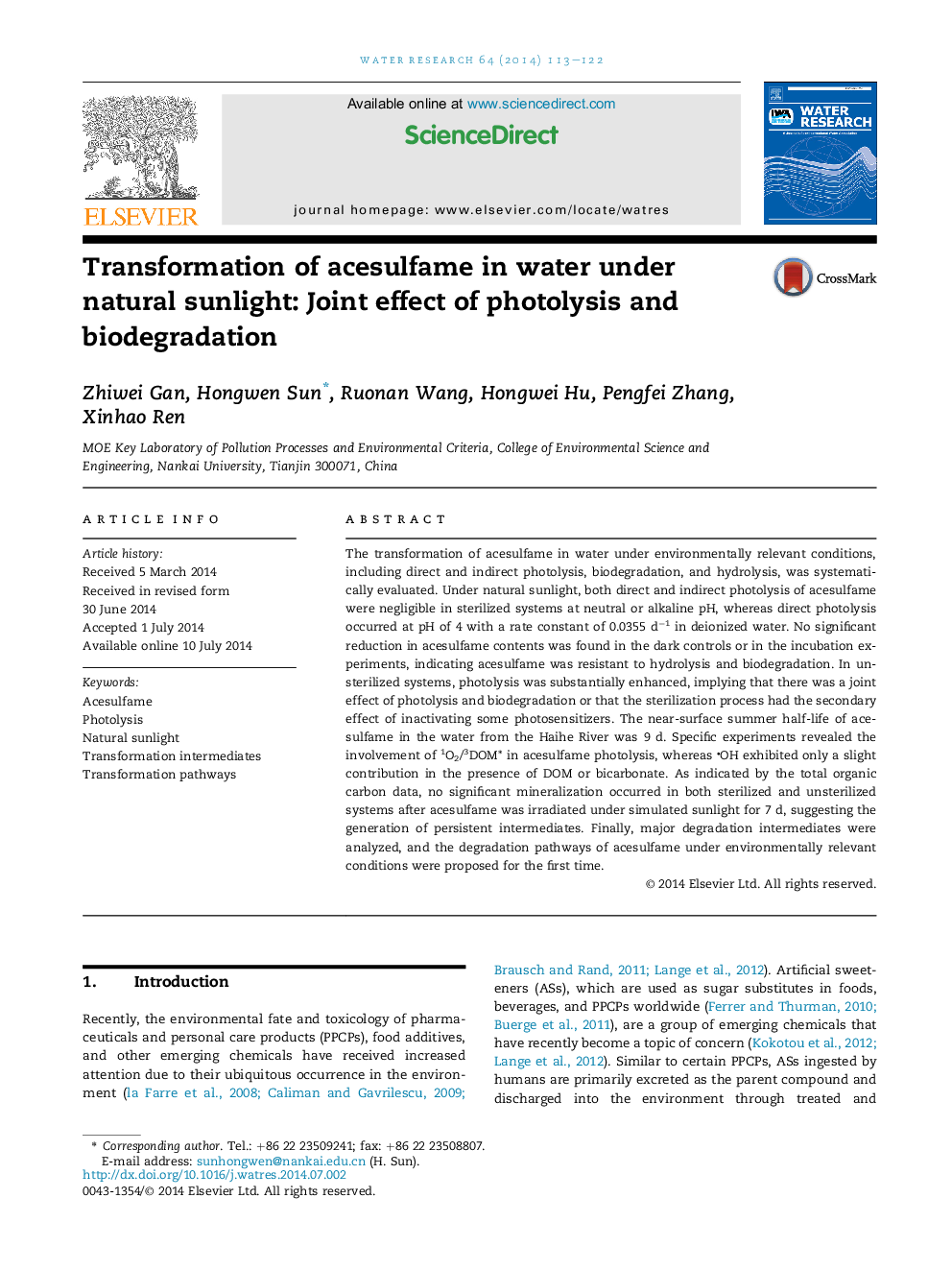| کد مقاله | کد نشریه | سال انتشار | مقاله انگلیسی | نسخه تمام متن |
|---|---|---|---|---|
| 4481435 | 1623104 | 2014 | 10 صفحه PDF | دانلود رایگان |
• Under sunlight, photolysis of acesulfame was negligible at neutral or alkaline pH.
• Acesulfame was resistant to hydrolysis and biodegradation in the investigated waters.
• Joint of photolysis and biodegradation was the main process for acesulfame removal.
• The intermediates and pathways of acesulfame degradation were proposed.
The transformation of acesulfame in water under environmentally relevant conditions, including direct and indirect photolysis, biodegradation, and hydrolysis, was systematically evaluated. Under natural sunlight, both direct and indirect photolysis of acesulfame were negligible in sterilized systems at neutral or alkaline pH, whereas direct photolysis occurred at pH of 4 with a rate constant of 0.0355 d−1 in deionized water. No significant reduction in acesulfame contents was found in the dark controls or in the incubation experiments, indicating acesulfame was resistant to hydrolysis and biodegradation. In unsterilized systems, photolysis was substantially enhanced, implying that there was a joint effect of photolysis and biodegradation or that the sterilization process had the secondary effect of inactivating some photosensitizers. The near-surface summer half-life of acesulfame in the water from the Haihe River was 9 d. Specific experiments revealed the involvement of 1O2/3DOM* in acesulfame photolysis, whereas OH exhibited only a slight contribution in the presence of DOM or bicarbonate. As indicated by the total organic carbon data, no significant mineralization occurred in both sterilized and unsterilized systems after acesulfame was irradiated under simulated sunlight for 7 d, suggesting the generation of persistent intermediates. Finally, major degradation intermediates were analyzed, and the degradation pathways of acesulfame under environmentally relevant conditions were proposed for the first time.
Figure optionsDownload high-quality image (325 K)Download as PowerPoint slide
Journal: Water Research - Volume 64, 1 November 2014, Pages 113–122
